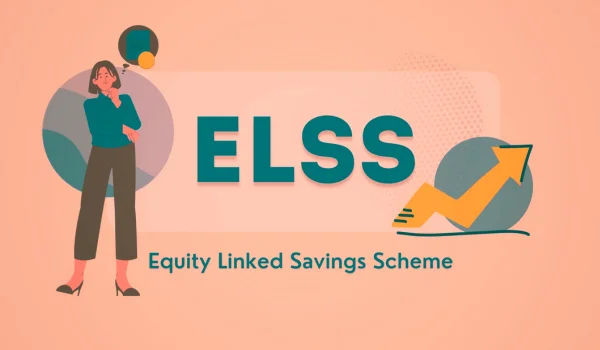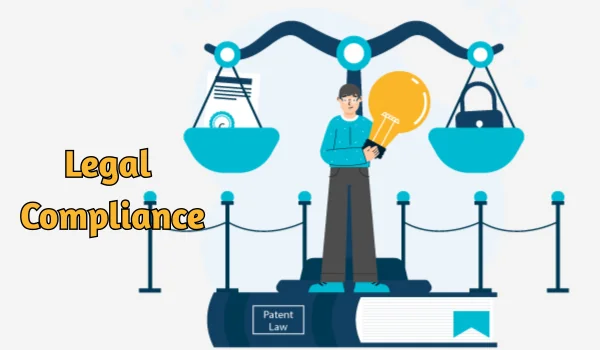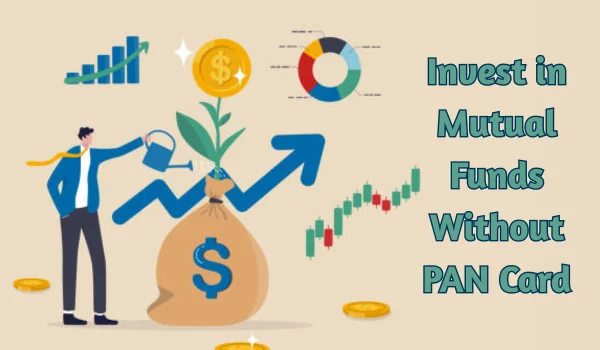When it comes to smart investing and saving on taxes in India, Equity Linked Saving Scheme (ELSS) often tops the list. ELSS not only helps you reduce your tax liability under Section 80C of the Income Tax Act, 1961, but also offers the dual benefit of wealth creation and tax savings. For salaried individuals, freelancers, business owners, and even first-time investors, ELSS has emerged as a powerful financial tool.
In this detailed guide, we’ll understand what ELSS is, its benefits, how it compares with other tax-saving options, and why it is considered one of the best ways to save tax in India in 2025.
What is ELSS?
ELSS (Equity Linked Saving Scheme) is a type of mutual fund scheme that primarily invests in equity and equity-related instruments. It comes with a mandatory lock-in period of 3 years, which is the shortest among all tax-saving instruments under Section 80C.
By investing in ELSS, an individual can claim a deduction of up to ₹1.5 lakh per year, thereby potentially saving up to ₹46,800 in taxes annually (for individuals in the 30% tax slab).
Key Features of ELSS
| Feature | Details |
| Investment Type | Equity Mutual Fund |
| Lock-in Period | 3 Years (Shortest among tax-saving options) |
| Tax Benefit | Up to ₹1.5 lakh under Section 80C |
| Expected Returns | 10%–15% (market-linked, not guaranteed) |
| Minimum Investment | ₹500 onwards (SIP or lump sum) |
| Risk Level | Moderately High (due to equity exposure) |
| Liquidity | Withdrawals allowed only after 3 years |
| Tax on Gains | LTCG above ₹1 lakh taxed at 10% without indexation benefit |
Why ELSS is the Best Tax-Saving Investment Option?

- Shortest Lock-in Period
Unlike Public Provident Fund (15 years) or National Savings Certificate (5 years), ELSS comes with just a 3-year lock-in, giving you faster access to your money. It is ideal for investors who want a shorter commitment period.
- High Return Potential
As ELSS funds invest in the equity market, they have the potential to deliver higher returns over the long term compared to traditional tax-saving instruments like FD, NSC, or PPF. Historically, ELSS funds have delivered 10%–15% annual returns, depending on market performance.
- Wealth Creation + Tax Saving
While most 80C investments only help you save taxes, ELSS also creates wealth. It’s a rare combo of tax-saving + market-linked growth. Over 10–15 years, even small SIPs can grow into a significant corpus.
- SIP Mode for Convenience
You can invest in ELSS via Systematic Investment Plan (SIP) starting as low as ₹500 per month. SIP makes it affordable, reduces market timing risk, and helps inculcate disciplined investing habits.
- Tax Efficiency
Even though ELSS returns are taxed as Long Term Capital Gains (LTCG), the first ₹1 lakh of gains per year is tax-free, and gains above ₹1 lakh are taxed at just 10%. Compared to fixed deposit interest (taxed at slab rate), ELSS is more tax-efficient.
ELSS vs Other Section 80C Tax-Saving Instruments
Here’s a comparison to understand why ELSS stands out:
| Instrument | Lock-in Period | Returns (Approx.) | Risk Level | Tax on Returns |
| ELSS | 3 years | 10%–15% | Moderately High | 10% LTCG (Above ₹1 lakh) |
| PPF | 15 years | 7.1% | Very Low | Tax-Free |
| NSC | 5 years | 7.7% (2025) | Low | Taxable |
| 5-Year FD | 5 years | 6.5%–7.5% | Low | Taxable |
| Life Insurance | 5+ years | 4%–6% | Low | Tax-Free (under 10(10D)) |
| NPS (Tier 1) | Till Retirement | 8%–10% | Moderate | Partially Taxable |
| ULIP | 5 years | 6%–12% | Market-linked | Tax-Free (conditions apply) |
Clearly, ELSS offers high liquidity, short lock-in, and strong return potential, making it an ideal blend of risk and reward for modern investors.
Who Should Invest in ELSS?
- First-time equity investors looking to get exposure to mutual funds.
- Young professionals wanting high returns with tax benefits.
- Salaried individuals maxing out their 80C deduction.
- Long-term wealth builders ready to accept market fluctuations for better growth.
How to Start Investing in ELSS?
- Choose a Reliable Fund House: Use trusted platforms like Zerodha Coin, Groww, Paytm Money, or invest directly via fund websites like Axis Mutual Fund, ICICI Prudential, or SBI Mutual Fund.
- Pick the Right ELSS Scheme: Look for consistent performance, fund manager reputation, and expense ratio.
- Decide SIP or Lump Sum: SIPs offer rupee cost averaging; lump sum suits investors with surplus funds.
- Complete KYC: PAN card, Aadhaar, and address proof are required.
Top ELSS Funds to Consider in 2025 (Based on Past Performance)
| Fund Name | 3-Year CAGR (Approx.) | Expense Ratio | Fund Rating |
| Axis Long Term Equity Fund | ~12.1% | 0.94% | ★★★★☆ |
| Mirae Asset Tax Saver Fund | ~14.3% | 0.6% | ★★★★★ |
| Kotak Tax Saver Fund | ~11.7% | 0.74% | ★★★★☆ |
| Canara Robeco Equity Tax Saver Fund | ~13.2% | 0.68% | ★★★★☆ |
| DSP Tax Saver Fund | ~11.9% | 0.8% | ★★★★☆ |
(Note: Returns are market-based and not guaranteed. Ratings as per Value Research/CRISIL – June 2025)
Final Thoughts
ELSS is a power-packed tax-saving tool that aligns perfectly with modern investment goals — it’s flexible, growth-oriented, and suitable for both beginners and seasoned investors. In an era where traditional instruments are losing their edge due to lower returns and longer lock-ins, ELSS stands tall with its equity advantage, tax savings, and simplicity.
If you’re planning your taxes smartly in 2025, don’t ignore ELSS. Start early, stay invested for the long term, and let compounding work in your favour.
FAQs About ELSS
Q1. Can I withdraw my ELSS before 3 years?
No, each investment has a lock-in of 3 years.
Q2. Is ELSS safe?
It carries moderate to high risk, as it’s linked to the stock market.
Q3. What is the best time to invest in ELSS?
The best time is throughout the year via SIPs, not just during tax-saving season.
Q4. Are ELSS returns guaranteed?
No, returns depend on market performance.
If you need help choosing the right ELSS fund based on your risk appetite, age, and goals, feel free to ask!
With over 35+ ELSS funds available in India, choosing the right one for your tax-saving and wealth-building journey in 2025 can be overwhelming. While all ELSS funds offer tax benefits under Section 80C, not all deliver the same returns or stability.
This guide will help you understand what to look for in an ELSS fund, how to compare them, and make a smart, goal-based decision.
1. Check the Fund’s Historical Performance (3–5 Years)
Though past performance is not a guarantee of future returns, it gives a fair indication of how well the fund has navigated market ups and downs.
✅ Look for ELSS funds with consistent returns over 3, 5, and 7 years, especially in different market cycles.
📌 Tip: Prefer funds that have outperformed the benchmark (e.g., Nifty 500 TRI) consistently.
2. Expense Ratio – Keep an Eye on Costs
The expense ratio is the annual fee charged by the fund house to manage your money. A lower expense ratio means higher net returns for you.
- For ELSS, an expense ratio below 1% is considered good in direct plans.
- Direct plans (invested via fund houses or SEBI-registered platforms) have lower expense ratios than regular plans (via agents/distributors).
3. Fund Manager’s Track Record
The fund manager’s experience and strategy plays a crucial role in performance.
✅ Check:
- How long the current fund manager has been managing the scheme.
- His/her performance across other schemes.
- Investment strategy – is it conservative, aggressive, or balanced?
4. Portfolio Diversification
A good ELSS fund should have a well-diversified portfolio across sectors (banking, IT, pharma, FMCG, etc.) and market caps (large-cap, mid-cap, small-cap).
📌 A well-balanced allocation protects your investment during market downturns and boosts returns in upswings.
5. Assets Under Management (AUM)
The AUM indicates how much total money is invested in the fund. It shows the popularity and trust level among investors.
- Very low AUM (< ₹500 crore) might indicate less stability.
- Very high AUM (> ₹10,000 crore) can sometimes reduce flexibility for the fund manager.
📌 Ideal AUM for ELSS funds in 2025: Between ₹1,000 crore and ₹8,000 crore.
6. Risk-Adjusted Returns (Sharpe Ratio, Alpha)
Risk-adjusted returns help assess if the fund is taking too much risk for the returns it’s delivering.
- Sharpe Ratio: Higher is better. It measures returns per unit of risk.
- Alpha: Positive Alpha means the fund has beaten its benchmark.
📌 These metrics are available on sites like Value Research, Morningstar, and Groww.
7. Fund House Reputation
Stick to trusted AMCs with strong compliance, transparency, and governance standards.
Top fund houses in India offering top-rated ELSS in 2025:
- Mirae Asset
- Kotak Mutual Fund
- Axis Mutual Fund
- SBI Mutual Fund
- HDFC Mutual Fund
- ICICI Prudential
Top ELSS Funds to Consider in 2025 (Comparison Table)
| Fund Name | 5-Yr CAGR | Expense Ratio | AUM (₹ Cr) | Sharpe Ratio | Rating |
| Mirae Asset Tax Saver Fund | ~14.2% | 0.6% (Direct) | ₹14,500 | 1.04 | ★★★★★ |
| Canara Robeco Equity Tax Saver | ~13.8% | 0.68% | ₹5,200 | 0.96 | ★★★★☆ |
| Kotak Tax Saver Fund | ~12.1% | 0.74% | ₹3,400 | 0.89 | ★★★★☆ |
| Axis Long Term Equity Fund | ~11.5% | 0.94% | ₹11,200 | 0.81 | ★★★★☆ |
| DSP Tax Saver Fund | ~11.3% | 0.80% | ₹2,800 | 0.84 | ★★★★☆ |
(Source: Value Research & fund fact sheets, updated as of June 2025)
8. Direct Plan vs Regular Plan – Choose Wisely
| Plan Type | Expense Ratio | Returns (Net) | Where to Invest |
| Direct Plan | Lower (0.6–1%) | Higher by 0.5–1% | AMC website, Groww, Zerodha Coin, Paytm Money |
| Regular Plan | Higher (1.2–2%) | Lower returns | Via distributor/advisor |
📌 Always go for Direct Plans if you’re confident to invest without intermediaries.
9. Growth vs Dividend Option
- Growth Option: Profits are reinvested and paid on final redemption. Best for long-term wealth.
- Dividend Option: Dividends are paid during the investment period. Not tax-efficient post-2020.
✅ In 2025, Growth option (Direct Plan) is the most preferred ELSS choice for long-term investors.
10 Don’t Rely Solely on Star Ratings
Many investors make the mistake of blindly trusting fund ratings. These ratings fluctuate based on recent performance and algorithm changes.
✅ Use ratings as supporting tools, not the primary factor. Focus more on long-term consistency and fundamentals.
Final Checklist – Choosing the Right ELSS Fund
✅ Fund has a consistent 5-year track record
✅ Expense ratio < 1% in Direct Plan
✅ Invests across diversified sectors
✅ Managed by experienced fund manager
✅ AUM between ₹1,000–₹8,000 crore
✅ Direct Plan + Growth Option selected
✅ Fits your risk appetite and time horizon
Conclusion
Choosing the best ELSS fund in 2025 is not just about picking the one with the highest recent returns. It’s about understanding your goals, risk profile, and investing in a fund that can sustainably grow your wealth while saving taxes.
Remember, starting early and staying consistent is more important than chasing the “best” fund every year. Pick a good ELSS, invest via SIPs, stay invested for the long term — and let compounding take care of the rest.





